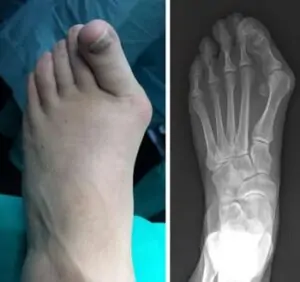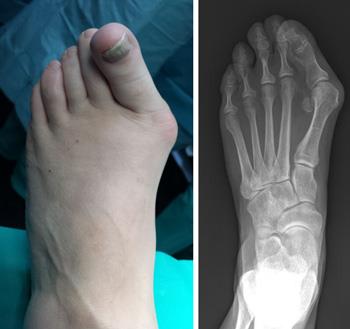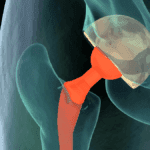This article provides information on surgery for bunions. For more general information: Bunions.Most people with bunions find pain relief with simple treatments to reduce pressure on the big toe, such as wearing wider shoes or using pads in their shoes. However, if these measures do not relieve your symptoms, your doctor may recommend bunion surgery.There are different types of surgeries to correct a bunion. Bringing the big toe back to its correct position may involve realigning bone, ligaments, tendons, and nerves.
Are You a Candidate for Surgery?
In general, if your bunion is not painful, you do not need surgery. Although bunions often get bigger over time, doctors do not recommend surgery to prevent bunions from worsening. Many people can slow the progression of a bunion with proper shoes and other preventive care, and the bunion never causes pain or other problems.
It is also important to note that bunion surgery should not be done for cosmetic reasons. After surgery, it is possible for ongoing pain to develop in the affected toe — even though there was no bunion pain prior to surgery.
Good candidates for bunion surgery commonly have:
- Significant foot pain that limits their everyday activities, including walking and wearing reasonable shoes. They may find it hard to walk more than a few blocks (even in athletic shoes) without significant pain.
- Chronic big toe inflammation and swelling that does not improve with rest or medications
- Toe deformity—a drifting in of the big toe toward the smaller toes, creating the potential for the toes to cross over each other.
(Left) A bunion that has progressed to deformity with the big toe crossing over the second toe. (Right) An x-ray of the same bunion shows how far out of alignment the bones are. Reproduced from Wagner E, Ortiz C: Proximal Oblique Sliding Closing-wedge Osteotomy for Wide-angle Hallux Valgus. Orthopaedic Knowledge Online Journal: Vol 12, No 4, 4/1/2014; Accessed December 4, 2015.
- Toe stiffness—the inability to bend and straighten the big toe
- Failure to obtain pain relief with changes in footwear
- Failure to obtain pain relief from nonsteroidal anti-inflammatory drugs (NSAIDs), such as ibuprofen and naproxen. The effectiveness of NSAIDs in controlling toe pain varies greatly from person to person.
Deciding to Have Bunion Surgery
After bunion surgery, most patients have less foot pain and are better able to participate in everyday activities.
As you explore bunion surgery be aware that so-called “simple” or “minimal” surgical procedures are often inadequate “quick fixes” that can do more harm than good. Although many bunion procedures are done on a same-day basis with no hospital stay, a long recovery period is common. It often takes up to 6 months for full recovery, with follow-up visits to your doctor sometimes necessary for up to a year.
It is very important to have realistic expectations about bunion surgery. For example, bunion surgery may not allow you to wear a smaller shoe size or narrow, pointed shoes. In fact, you may need to restrict the types of shoes you wear for the rest of your life.
As you consider bunion surgery, do not hesitate to ask your doctor questions about the operation and your recovery. Some examples of helpful questions to ask include:
- What are the benefits and risks of this surgery?
- What are the possible complications and how likely are they to occur?
- How much pain will there be and how will it be managed?
Be sure to write down your doctor’s answers so you can remember them at a later time. It is important to understand both the potential benefits and limitations of bunion surgery.
Surgical Procedures
In general, the common goals of most bunion surgeries include:
- Realigning the metatarsophalangeal (MTP) joint at the base of the big toe
- Relieving pain
- Correcting the deformity of the bones making up the toe and foot
Because bunions vary in shape and size, there are different surgical procedures performed to correct them. In most cases, bunion surgery includes correcting the alignment of the bone and repairing the soft tissues around the big toe.
Your doctor will talk with you about the type of surgery that will best correct your bunion.
Repairing the Tendons and Ligaments Around the Big Toe
In some cases, the soft tissues around the big toe may be too tight on one side and too loose on the other. This creates an imbalance that causes the big toe to drift toward the other toes.
Surgery can shorten the loose tissues and lengthen the tight ones. This is rarely done without some type of alignment of the bone, called an osteotomy. In the majority of cases, soft tissue correction is just one portion of the entire bunion corrective procedure.
Osteotomy
In an osteotomy, your doctor makes small cuts in the bones to realign the joint. After cutting the bone, your doctor fixes this new break with pins, screws, or plates. The bones are now straighter, and the joint is balanced.
Osteotomies may be performed in different places along the bone to correct the deformity. In some cases, in addition to cutting the bone, a small wedge of bone is removed to provide enough correction to straighten the toe.
As discussed above, osteotomies are normally performed in combination with soft tissue procedures, as both are often necessary to maintain the big toe alignment.

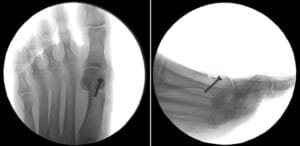
X-rays taken from the top and the side of the foot show a bunion corrected with osteotomy.
Arthrodesis
In this procedure, your doctor removes the arthritic joint surfaces, then inserts screws, wires, or plates to hold the surfaces together until the bones heal. Arthrodesis is commonly used for patients who have severe bunions or severe arthritis, and for patients who have had previous unsuccessful bunion surgery.

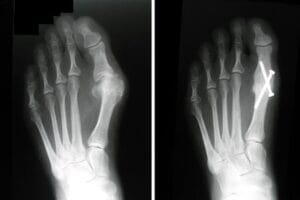
The x-ray on the left shows severe arthritis of the MTP joint. After arthrodesis (shown on the right), the entire foot is realigned. An advantage of arthrodesis is that no additional procedures are necessary to correct the bunion.
Exostectomy
In this procedure, your doctor removes the bump from your toe joint. Exostectomy alone is seldom used to treat bunions because it does not realign the joint. Even when combined with soft tissue procedures, exostectomy rarely corrects the cause of the bunion.
Exostectomy is most often performed as one part of an entire corrective surgery that includes osteotomy, as well as soft-tissue procedures. If a doctor performs exostectomy without osteotomy, however, the bunion deformity often returns.

